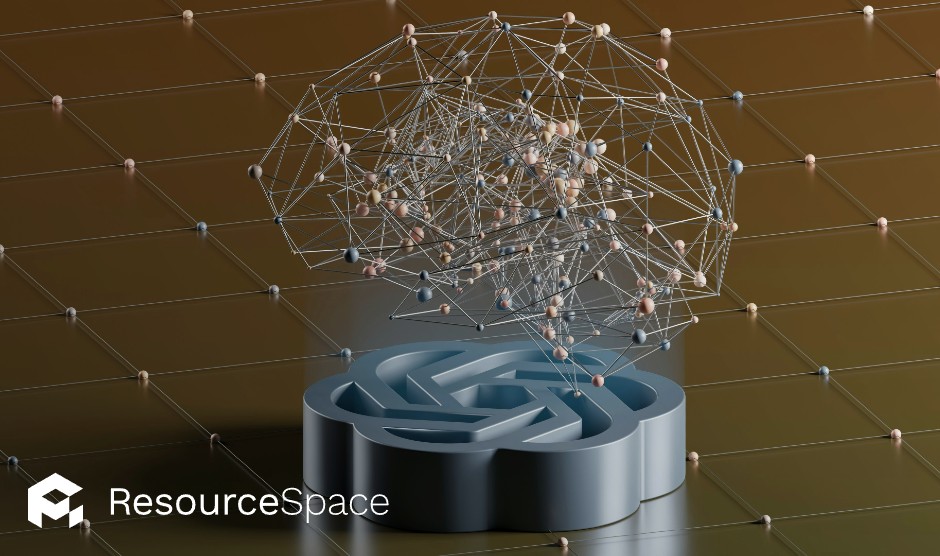
The team at ResourceSpace have been a joy to work with, helping us manage what could've been a really difficult transition every step of the way.
Blog
16th October 2024

Artificial intelligence is here to stay and, regardless of what your organisation does, or the sector you operate in, it’s probably on the radar of senior people within the business.
One of the most prominent use cases for AI at the moment is content creation, whether that’s for written or visual content assets, and it can be leveraged for multiple stages of the content creation process.
However, to get the most out of AI for your content marketing efforts, you need to think more strategically. In this blog we’re going to look at how to develop an effective AI content strategy.
There are numerous benefits to using AI for your content strategy. It can save time, help tackle writer’s block and enable people to create content who would struggle on their own.
However, the extent to which artificial intelligence tools can be used as part of a modern content strategy is varied. It’s possible to use AI for basic tasks like generating short content summaries, or writing entire articles from scratch. The key is to understand why you’re doing it and formulating a clear strategy and processes to manage it effectively.
AI is still a new technology, but how to use AI in your content strategy needs to be something you start thinking about sooner rather than later.
Developing an AI-driven content strategy can be broken down into five steps:
Start with the end in mind. Why do you want to use AI as part of your content strategy?
AI can be incredibly useful for creating content, but only if it’s to improve your content creation process—not simply to replace human involvement.
Before implementing AI as part of the process, consider the following questions:
If the answer to question one is ‘negatively’, it’s likely the answer to question three will be negative too. In this case, you should probably think twice about introducing it.
If the answer to question two is ‘negatively’, but you think the quality of the content you produce would be improved, it might still be worthwhile.
One of the hardest parts of content creation is when you’re staring at a blank document. Fortunately, AI is great for getting you started, whether that’s by creating content outlines and blog briefs.
There are a number of paid tools that can be used for generating content outlines, but there are also some great free applications, including ChatGPT, Copy.ai and Ryan Robinson’s Blog Outline Generator.
Creating content briefs is a great use case for AI because it provides guidance, while leaving the real creativity to the human writers.
Your content is intended to engage your audience and convey the benefits of your product or service—but first it has to be discoverable. This is where search engine optimisation (SEO) comes in, but SEO is a whole different skill set.
Fortunately, there are a number of AI tools that are designed specifically to optimise content for search engines. This includes tools that can create content optimised for certain keyphrases, as well as analyse live web pages and provide recommendations on how to improve them.
Some of the most interesting AI innovation has been with visual content assets and, while the early examples of AI-generated images weren’t high quality (and in some cases, downright bizarre), the rapid improvement the technology has made means organisations should start taking it seriously.
For small teams with limited graphic design resources, or if you’d rather your designers were spending time on assets with a higher impact than blog featured images, AI image generation tools can be incredibly useful.
READ MORE: AI Image Generation Tools Ranked
Finally, there always needs to be some human intervention for reviewing, editing and finalising any content that AI produces. These tools are getting better all of the time, but they’re still far from perfect, and there are many high profile examples of AI getting facts wrong and in some cases, simply making things up.
ResourceSpace is a Digital Asset Management (DAM) platform that can support your content marketing efforts. To find out more about why you need a DAM and how ResourceSpace can help, get in touch with the team here, or book your free demo by clicking below.
#ArtificialIntelligence
#ContentCreation
#ContentMarketing
#SEO
#VisualContent
#AudienceEngagement
#BestPractice
#IndustryNews
#ResourceSpaceTips